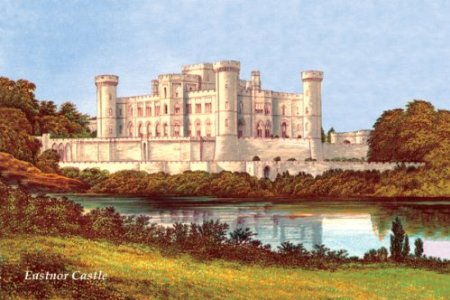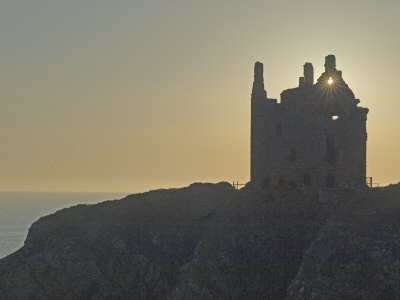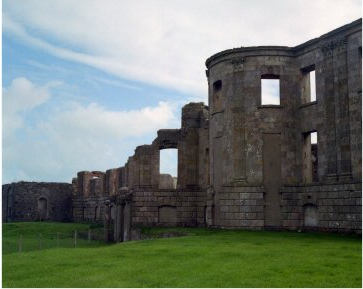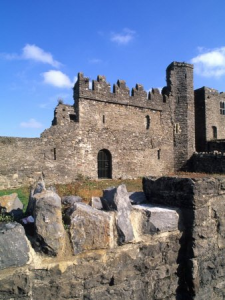Irish Castles and Ancient Structures
Irish castles and other ancient structures of Ireland include stone towers, walls and other fortifications that can be found all over the Irish countryside. Some of these structures have been beautifully restored while others still lie in ruin with hardly enough left to imagine their former greatness and importance.
The castles of Ireland were not elaborate dwellings of royalty. It is true that while most were owned by the heads of clans, kings, or titled English gentry, they were fortifications for protection against raids and invasions. When the vikings invaded Ireland, they extended the concept of fortified enclosures by building walls around entire villages or towns, with towers placed in the walls at intervals to watch for enemies.
Something you will notice, especially if you are American, is that the castles are not as big as you would expect them to be. They are very dark and the windows were mostly arrow slits, just large enough to see who might be approaching and to defend the castle. The rooms are very small so that a small fire would keep only the most bitter cold and dampness at bay. A few may have a great hall and several have their own chapel.
Almost anywhere you go in Ireland you can find a pile of rubble that was once a castle. Often, even a wall or two still stand to give an idea of the former structure. Scattered amongst the ruins you will sometimes come across a complete structure that has had some upkeep but would not be a place in which you would want to live.
The medieval jewels are the castles that have either been continuously occupied or those that have been lovingly restored. Some have been restored to the point of their former grandeur but, more often, have been updated with heating, plumbing and modern conveniences that you would expect in any home. Many of them are open to the public for tours, while others are used as a venue for entertainment. You will also find some that offer rooms by the night and a few allow you to reserve the entire castle for a week or more.
Finding castle ruins in Ireland is quite easy but the first problem is in learning what they were named. Historically, they may be known by a completely different name than what the locals have named them; or the names were changed due to an invasion or a transfer in ownership. The second problem is compiling their accurate provenance. Many times information can be found; however, don't jump to conclusions, because you may find that it conflicts with other information.
There are hundreds of tall, round towers throughout Ireland. Many are located near a church, or where a church once stood, where the monks used them as a safe haven during attacks. There are no doors in these towers, but only an opening above the reach of a normal ladder or other normal means of scaling the tower wall. The monks reached the opening via a rope ladder which was then pulled up behind them.
The square towers found in Ireland are fortified town houses which were lived in full time. They were not as elaborate a defense as a castle might be but its occupants did have a certain degree of protection against an attack.
There are many other types of structures that would not fall under the previous categories. Several of these would be fortifications specifically built for protection during a battle. Some others would be castles, with or without towers, that were constructed on the tops of sheer cliffs to prevent access from that side. Others were built directly on the edge of a lake or river so access from that side would be very easily defended.
Abbeys and monasteries are plentiful around Ireland's countryside particularly in the area of the Dingle Peninsula. Many of these were erected beginning in the fifth century, when St. Declan and other Christian missionaries were spreading the Gospel in Ireland prior to St. Patrick's arrival. During the conversion of the Celtic pagans to Christianity, Ireland was not under the sole rule of Rome. Because of this, many of these structures contain carvings in 'ogham', the earliest form of the written Celtic language.
The Wonderful Barn in County Kildare is a strange conical shaped building constructed in 1743. The ninety-four stairs ascending upwards around the exterior of the seventy-three foot tall building makes it an unusual site to behold. The Wonderful Barn was built by Mrs. William Connoly in Leixlip to give work to the poor during hard times.
This general information about Irish castles and other ancient structures is meant to give the reader a glimpse into the history of ancient Ireland during the past several centuries.
For more information on Irish Castles visit irelandnow.com
Disclaimer: LittleShamrocks.com is an affiliate website that receives commissions from sales of the products listed. We have purchased and sampled many, but not all, of the products on these pages.
© Copyright LittleShamrocks.com. All Rights Reserved.








